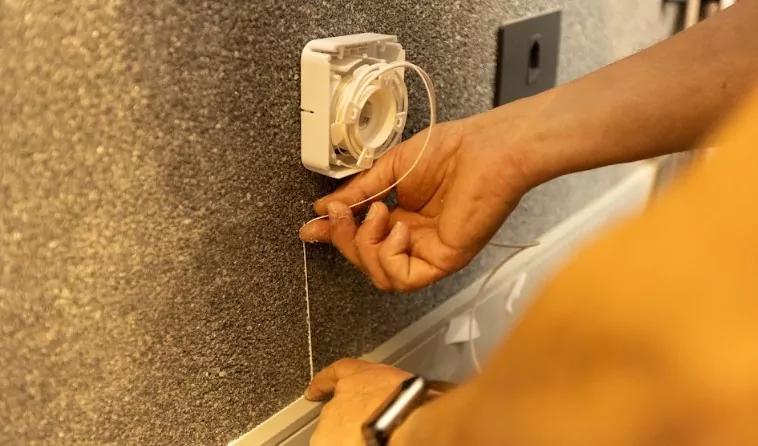All change decisions in your data center must be carefully planned. Knowing what they can be and what connectivity trends they can address is essential in this process.
A small planning error, such as the chosen connection topology, can cost the credibility of the project and your company. We want you to be aware of connectivity trends and the importance of considering different topologies in connecting data centers.
Data center infrastructure: what should you consider in the planning?
The starting point for changes or new implementations should always be a preliminary technical study. Through this, specialists are able to size the infrastructure needs and define the communication prerequisites so that the system not only works correctly, but is also able to work with the legacy (existing) system, a new project or a project that will be expanded in the future.
The list of things to consider includes the topology of the project, the transmission distances, the power budget (for fiber optic implementation), the application interfaces of the active equipment that will determine the transmission speeds and of course, the physical infrastructure layer of the structured cabling system that will be required to meet all these demands, such as cable types, connectivity, cable trunking and routing system, cabinets, and other network elements that also need to be considered in this stage.
It is important to note that this stage must be executed with great caution. Errors in the initial phase of the project can give rise to a kind of “cascade effect”, increasing costs in the later
implementation phases and resulting in inadequate infrastructure or that does not meet the possible growth in demand.
There are various Data Center models and we can highlight the main ones: Enterprise (private corporations and government agencies), Internet (service providers and telephone operators), Colocation (assignment of physical space for contractors), Hosting (hosting services to minimize investment in hardware and software) and Hyperscale (large content providers), as well as Edge types (which are smaller structures to meet demands closer to the applications).
Well, when it comes to connection topologies within data centers, we go by what the ANSI/TIA-942 standard recommends. Basically, there are 4 types:
– Centralized Cross-connect: in the main area (known as MDA), there is a central network equipment (switch core), from which the connection to the server area (known as EDA) is made.
– T.o.R. (Top-of-Rack): Each cabinet in the equipment area (known as EDA) has a network equipment (switch) installed on top (top of the cabinet), and connections to the servers are made directly from this switch with patch cords.
– E.o.R. (End of Row): The cabinet that is in the area for connection with the equipment areas (known as HDA) is placed at the end of the server cabinet row and horizontal network cabling serves the cabinets of those of the EDA’s from this point.
– M.o.R. (Middle-of-Row): The HDA cabinet is centralized in the row of the server cabinet and the horizontal network cabling serves all the EDA’s cabinets equidistantly.
Define the type of cabling
In general terms, two types of structured cabling are used to implement data centers: the metal (copper) twisted pair (also known as UTP) whose Category 6A is the most recommended, and the fiber optics that is already gaining more and more space for its advantages in terms of reaching greater distances with higher speeds.
Lighter, more durable and immune to electromagnetic interference, fiber optics have: greater signal transmission efficiency, reducing the incidence of interference and noise, reaching much higher speed rates at greater distances, which makes them a more interesting option when betting on a technology in constant ascent and application in current and future data centers. Not to mention, if we’re talking about preparing the data center for speeds of 400 Gbp/s, the only path is fiber optics.
It is also worth remembering that the physical layout of the cabling will depend on the chosen topology (mentioned above) and also on the planned network architecture. Therefore, before simply defining how the data centers will be connected to each other, all the aspects involved in the process must be taken into account.
Don’t forget connectivity
Finally, the types of connectors that will be used in these connections must also be taken into account. Optical connectors have an advantage in this aspect because they allow fiber networks to be assembled without fusions or splices, which is known as pre-connectorized systems. To get an idea, more and more MPO (Multi Fiber Push On) type connectors have been used that can support between 8 and 24 fiber optics in a single connector. Therefore, they are used in conjunction with accessories such as cassettes, optical distributors (DIO’s), forming an optical solution channel.
Therefore, it is worth remembering and commenting further on the main advantages of fiber optics in the pre-terminated solution:
● Flexibility and modularity, with optimization of physical space;
● Scalability and ease of expansion without losing quality;
● Quick and easy installation and reconfiguration;
● Simple handling, no special tools required;
● High performance and low connection losses;
● When projected, supports current and future data transmission rates.
In addition, in this case, there is support for data transmission with speeds of up to 400 Gbp/s in OM5 multimode fiber of up to 150 meters, according to the most recent approval of the 400G BASE-SR4.2 interface by the international organization IEEE (Institute of Electrical Electronics Engineers). As it is an average speed above the current standard, in practice this means high scalability and flexibility to assimilate future demands. In other words, the initial investment may even be a little higher, but the medium and long-term results and prospects end up justifying options like these by allowing new business.





